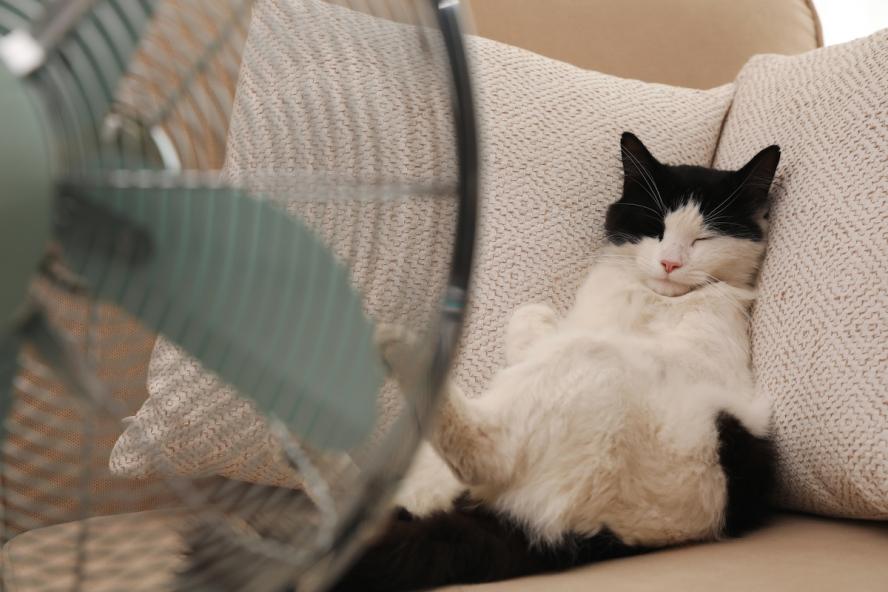-
About
- Leadership & Faculty
- News & Events
-
Academics
- Graduate
- Advanced Clinical Training
- Continuing Education
- Academic Departments
- Academic Offices
- Simulation Experiences
-
Student Life
- Offices
-
Research
-
Hospitals & Clinics
- Emergency Care
- Hospital Services
-
Community Outreach
- Volunteer
Keeping Pets Cool in the Summer
Things to Know

The summer months bring much joy for humans, as many spend more time outdoors and embark on vacations. But as the temperatures rise, dangers lurk for our furry family members. Here’s some expert advice about keeping your pets cool this summer.
Could you share some safety tips about how to keep pets cool during the summer?
In general, the same ways we ourselves keep cool apply to pets as well. Make sure that there is always a source of water to drink. Avoid high ambient temperatures indoors by using fans and air conditioning. Do not crate dogs in a location with constant bright light. Refrain from taking long walks or hikes during the peak hours of 11 a.m.–2 p.m.
Many dogs who suffer heat stroke fall into two categories:
- A dog who is active/exercises regularly but is either allowed to do so or is taken on a long walk/hike for too long for them to compensate, or
- Short-snouted dogs (brachycephalic breeds like Bulldogs), as they have a tougher time keeping cool.
It’s important to know that dogs and cats only have sweat glands on their paw pads, unlike us. For dogs, this means that panting to evaporate heat is crucial for them to regulate body temperature.
Since cats are very rarely intentionally exposed to prolonged periods of heat/humidity (i.e. they don’t go for hikes), we very rarely see heat stroke in cats.
And, as a reminder, never leaving a pet unattended in a car. Internal temperatures in a parked car that is not using air conditioning can reach well over 100 degrees F within minutes. According to the American Veterinary Medical Association, hundreds of pets die from heat exhaustion each year after they are left in a parked vehicle.
What are the first signs of heatstroke in pets?
The signs are non-specific, but I’d be mindful of excessive panting (in cats, any open-mouth breathing or panting is abnormal. A cat that is either panting, profoundly lethargic, unable to walk, or intolerant to exercise should be seen by a veterinarian immediately, especially in the context of hot temperatures.
As heat exposure progresses to heat exhaustion/heat stroke, dogs will commonly develop sudden GI upset (vomiting with profuse and sometimes bloody diarrhea). Severe signs would include mental dullness/unresponsiveness, blue/purple discoloration of the gums/tongue, or seizures.
How do you treat a pet with heatstroke?
Pets with suspected heat stroke should seek immediate veterinary attention. They should be brought away from high ambient temperatures (i.e. brought inside, if outside). Water can be offered. If you find a dog laying on its side breathing hard in the heat, you can briefly douse them in room-temperature water, but any delay in seeking medical attention should be avoided.
*Important note – This response should be conducted with ROOM TEMPERATURE water, not cold water, and should be brief. This is because rebound low body temperature (hypothermia) is highly common and should be avoided. In addition, pets doused with water should NOT be wrapped up with a wet towel. The purpose of wetting them is for heat to evaporate off. If they are wrapped, this limits evaporation and can increase the high body temperature.
Dr. Ian DeStefano is an assistant clinical professor in the Cummings School of Veterinary Medicine’s Department of Clinical Sciences and a member of the Emergency Medicine & Critical Care team.